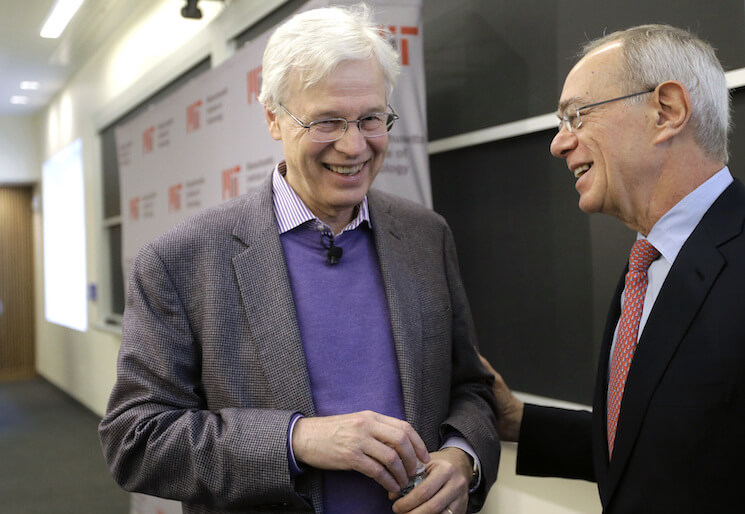
The U.S. labor market continues to recover from the still lingering effects of the Great Recession, but the question on the minds of many economists and analysts is how long can the healing continue? Or, in other words, has the U.S. economy hit “full employment,” where all the workers who can be drawn into the labor market by a stronger economy are now finding jobs? Understanding trends in the labor force participation rate is key for answering this question. Knowing whether the share of the population actively participating in the labor market can grow much further or whether it will trend down can help determine how low the unemployment rate might go.
First, a quick reminder on how the labor force participation rate affects the unemployment rate. The unemployment rate is calculated by taking the number of unemployed workers and dividing it by the labor force, the sum of the number of unemployed and those with a job. So knowing how much the denominator in that situation is going to change will impact the overall unemployment rate. For more on this, read Equitable Growth Senior Director for Policy Elisabeth Jacob’s testimony on trends in the labor force participation rate.
Views on labor force participation today vary on the extent to which structural forces or cyclical effects from the Great Recession of 2007-2009 are still affecting the participation rate. Many economists and analysts point to the role of structural forces or trends that long predate the Great Recession. But the long-term trend that gets cited the most is the aging of the working population as the Baby Boomer generation reaches retirement. The estimates on the effects of aging can vary quite a bit, but an estimate by the White House’s Council of Economic Advisers puts about half of the decline in participation from 2007 to 2014 into the “aging” category. When it comes to a policy response, it’s hard to change the age distribution of the population in the short run.
The importance of structural forces and demographics might give an impression that labor force participation or other trends are immutable and have to simply be endured. Regardless of how much slack remains in the labor market (the recent slight increase in the rate may be a sign of remaining slack), several structural factors can be addressed through policy actions.
Consider a new paper by Princeton University economist and former Council of Economic Advisers chairman Alan Krueger. The paper takes a direct look at the labor force participation rate and tries to understand what is depressing participation for men and women who are in prime working ages of 25 to 54. When it comes to prime-age men, health problems seem to be a huge barrier to labor market participation. According to the paper, almost 50 percent of men in this age group are taking medicine to control pain, and about 40 percent of this group say health issues are preventing them from taking a job. This is structural force that is not directly related to the Great Recession, but it certainly is amenable to a policy response.
As Krueger notes, such a trend means increased health insurance may help this trend or policymakers may want to look at pain-management interventions. When it comes to trends for prime-age women, there’s research pointing to the importance of family-friendly policies, or rather the lack thereof. Other countries have seen rising labor force participation rates for women, but we haven’t seen that in the United States as Krueger points out. Policies that help provide childcare and paid family and medical leave seem likely to help push back against these trends, as Equitable Growth’s executive director and chief economist, Heather Boushey, details in her recently published book, “Finding Time: The Economics of Work-Life Conflicts.” And paid leave may also help male employment by allowing workers to take time off for their own health problems.
Of course, there is still the possibility that cyclical forces are pushing down the labor force participation rate. As Matt Yglesias notes at Vox, wage growth hasn’t been particularly strong during this recovery, which points to continued weaknesses in the demand for labor among employers. He also points out that a stronger economy could make some of these structural forces seem less structural as employers would be less picky about which workers they hire. The only way we’ll really know is if policymakers, especially at the Federal Reserve, continue to be patient and help the current recovery continue.



